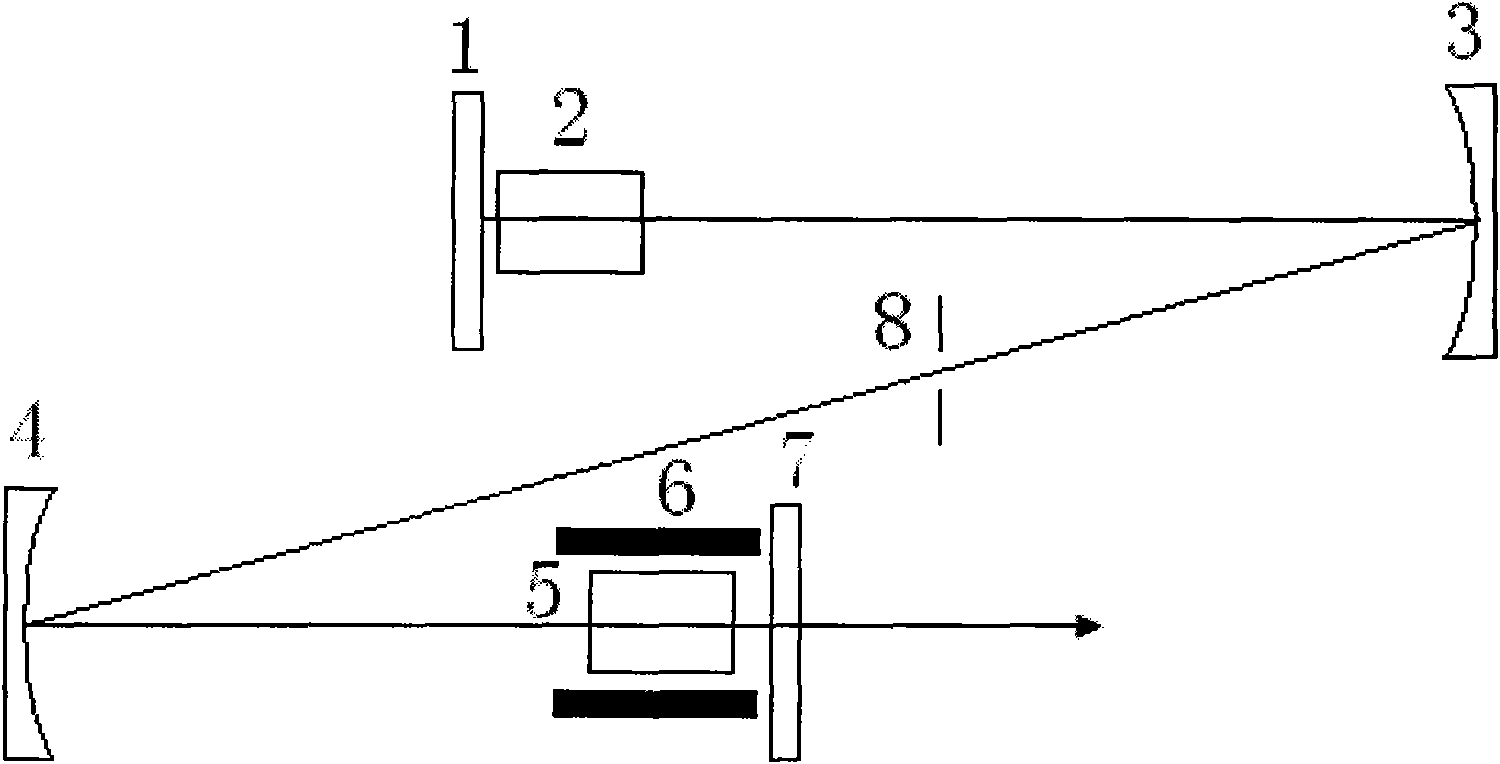Method for constructing cascade superlattice mode-locked laser
A technology of a mode-locked laser and a construction method, applied in the field of lasers, can solve the problems of low optical-to-optical conversion efficiency, small mode-locked stable area, poor output spot quality, etc., and achieves improved stability and optical-to-optical conversion efficiency, large nonlinearity The effect of loss factor
- Summary
- Abstract
- Description
- Claims
- Application Information
AI Technical Summary
Problems solved by technology
Method used
Image
Examples
Embodiment 1
[0039] according to figure 1 A cascaded second-order nonlinear mode-locked laser realized by a 1064nm cascaded superlattice was fabricated. Diode laser for end-pumping, with an output wavelength of 808nm, a resonator front cavity mirror 1 with total reflection of 1064nm and high transparency of 808nm, laser gain crystal 2 is Nd:YVO 4 For the first cavity mirror 3 and the second cavity mirror 4 with a resonant wavelength of 1064nm and high reflection, select a suitable cavity type so that the laser spot size at the laser crystal 2 matches the cavity film and the cascaded optical superlattice 5 The size of the light spot meets the requirements of nonlinear conversion. The temperature-controlled furnace 6 is used to control the temperature of the nonlinear crystal, and the rear cavity mirror 7 of the resonator is used as the output mirror, which has a certain transmittance to 1064nm. The 1064nm laser emitted by the laser crystal resonates between 1 and 7. Through the action of ...
Embodiment 2
[0041] according to figure 1A cascaded second-order nonlinear mode-locked laser realized by a 1064nm cascaded superlattice was fabricated. The diode laser used for side pumping, the output wavelength is 808nm, the front cavity mirror 1 of the resonant cavity with full reflection to 1064nm, the laser benefit crystal position 2 is Nd:YAG, and the cavity mirrors 3 and 4 with high reflection to the resonance wavelength of 1064nm are selected Different parameters make the spot size of the laser at the laser crystal 2 match the cavity film, and the spot size at the cascaded nonlinear crystal 5 meets the requirements of nonlinear conversion. The temperature-controlled furnace 6 used to control the temperature of the nonlinear crystal and the resonant cavity The rear cavity mirror 7 is used as an output mirror and has a certain transmittance to 1064nm. The 1064nm laser emitted by the laser crystal resonates between 1 and 7. Through the action of the nonlinear crystal, the mode-locke...
Embodiment 3
[0043] according to figure 1 A cascaded second-order nonlinear mode-locked laser realized by a 1064nm cascaded superlattice was fabricated. The difference from Example 1 is that one end face of the laser crystal 2 is used as an input mirror, and this end face is highly transparent at 808nm and highly reflective at 1064nm. A mode-locked output of 1064nm is obtained.
PUM
 Login to View More
Login to View More Abstract
Description
Claims
Application Information
 Login to View More
Login to View More - R&D
- Intellectual Property
- Life Sciences
- Materials
- Tech Scout
- Unparalleled Data Quality
- Higher Quality Content
- 60% Fewer Hallucinations
Browse by: Latest US Patents, China's latest patents, Technical Efficacy Thesaurus, Application Domain, Technology Topic, Popular Technical Reports.
© 2025 PatSnap. All rights reserved.Legal|Privacy policy|Modern Slavery Act Transparency Statement|Sitemap|About US| Contact US: help@patsnap.com



